Maclean’s annotates the 2016 federal budget
Maclean’s annotates the 2016 federal budget
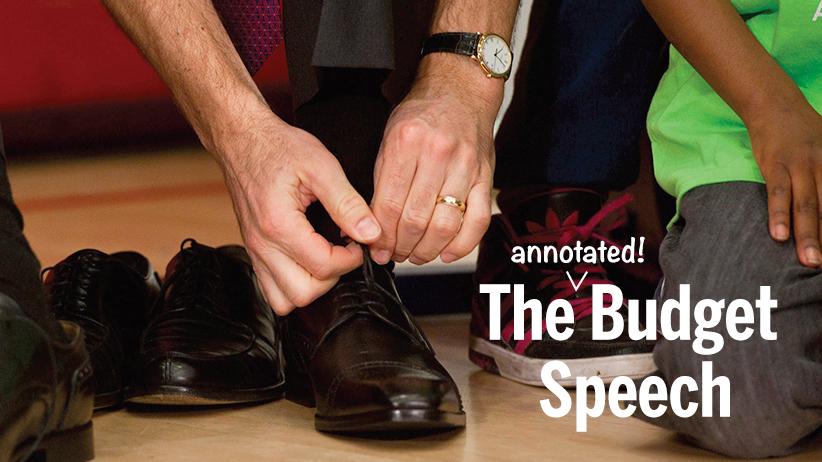
By Nick Taylor-Vaisey, Aaron Hutchins, Adrian Lee and Carl Neustaedter
Finance Minister Bill Morneau’s first budget is on the table—all 269 pages of it. Maclean’s experts broke it all down, offering up data, charts—and, because a budget can be complex—an emoji translation of Morneau’s own words. Click on the  for emoji.
for emoji.
Mr. Speaker,
Today, we begin to restore hope for the The words middle class appear 13 times in Morneau’s budget speech, and dozens of times in his budget plan. That repetition reflects a Liberal campaign commitment to offer “real help to Canada’s middle class and all those working hard to join it.” What specific measures in the budget are for the middle class? Well, a little bit of everything.
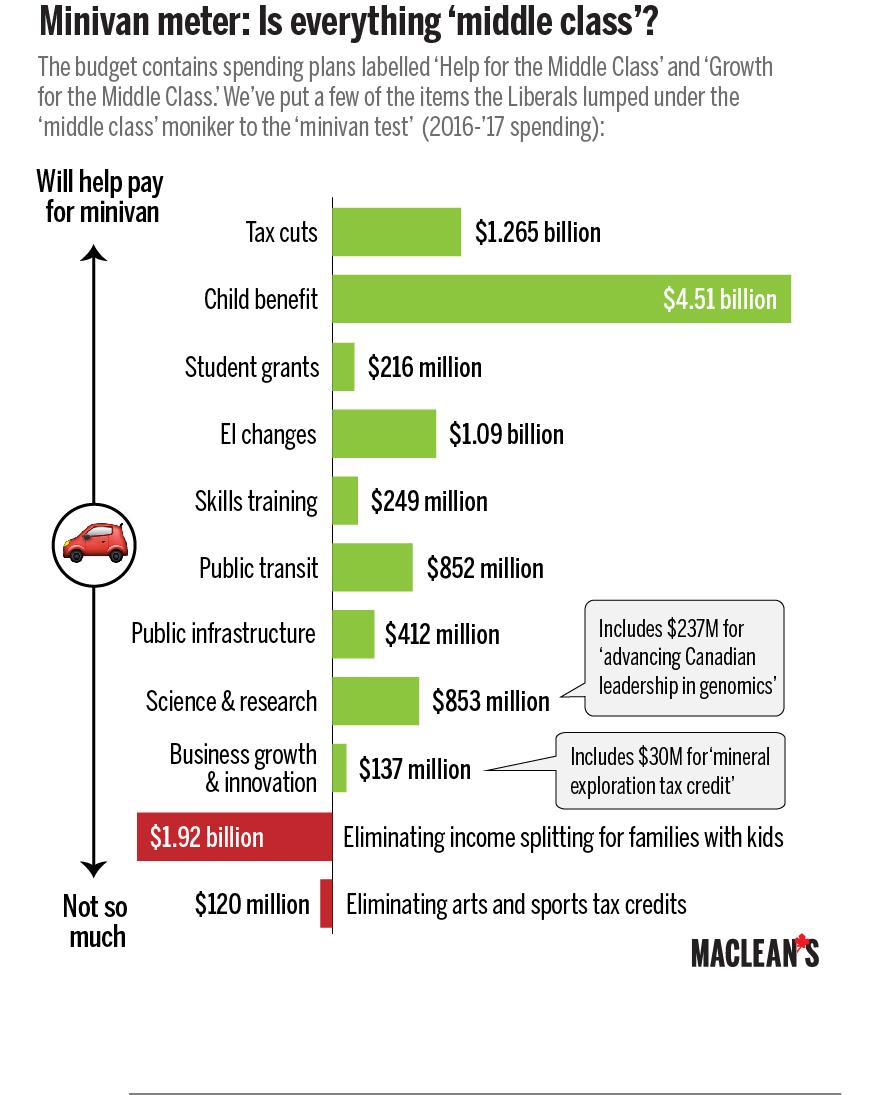

Today, we begin to revitalize the economy.
Today, we begin a long-term plan that will use smart investments and an unwavering belief that progress is possible to ensure that Canada’s best days lie ahead.
I know that this can be done. Canadians have done it before.
After the dark days of the Great Depression and the When have we heard references to the Second World War in budgets? Let’s start with 1995, when then-finance minister Paul Martin told the House of Commons that his $25.3 billion in spending cuts was “by far the largest set of actions in any Canadian budget since demobilisation after the Second World War .”, Canadians believed the future could be brighter.
They believed that if they worked hard and saved, they could get ahead.
They could buy a car and a house. They could send their children to college or university. They could look forward to a decent retirement.
And they could hope that their children would do even better than they did.
Confidence inspired investment. Investment inspired confidence.
In the post-war years, Canadians built the St. Lawrence Seaway and the Trans-Canada Highway. They constructed new airports, subways, pipelines and communication networks. They created new colleges and universities—and parents sent their children to those institutions in record numbers.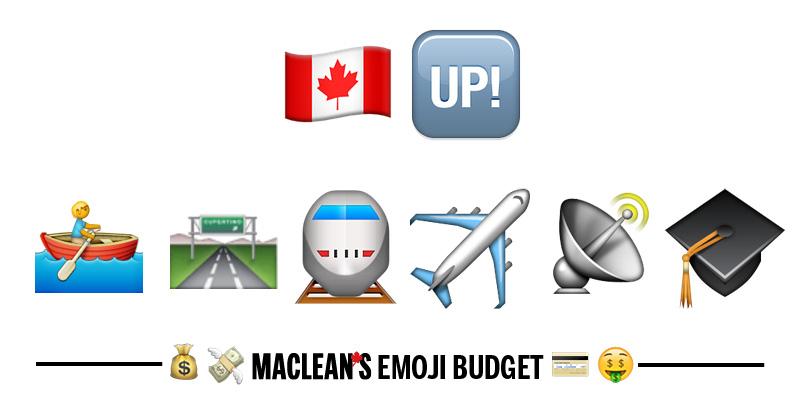
These investments made the workforce skilled and educated. They connected communities. They improved access to markets. They made the flow of people, goods and services faster and cheaper.
The economy grew rapidly. And Canadians prospered.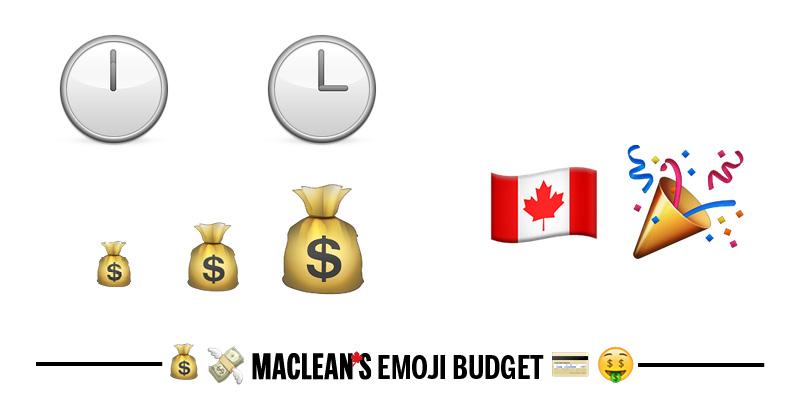
Hope and hard work were rewarded.
Well, Canadians are not so optimistic today. That’s understandable.
The The well-known plunge in the price of oil has stung petroleum-producing provinces. The price is expected to rebound in the near term, but only modestly by many estimates.
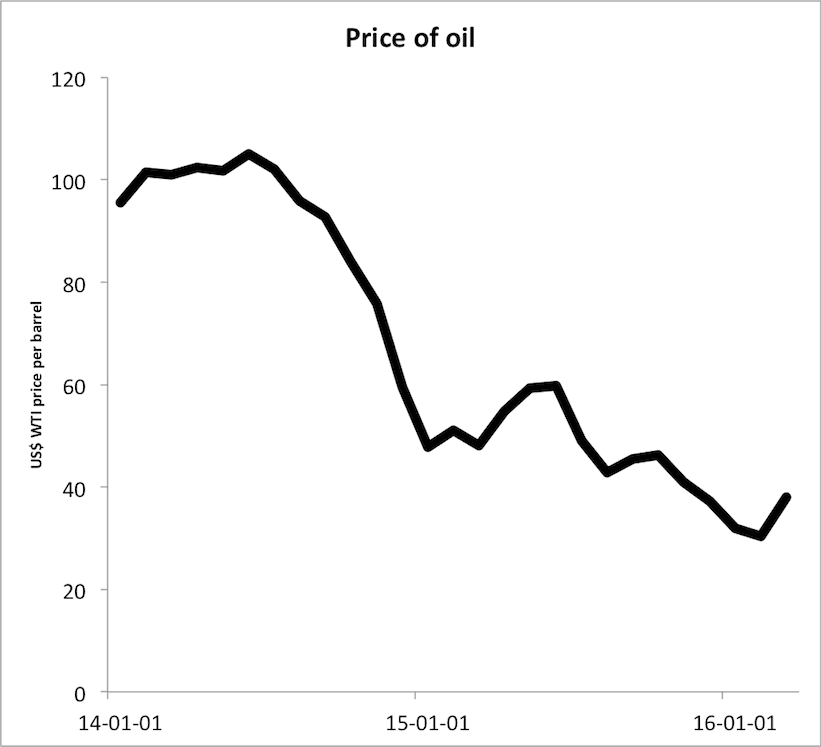 and other commodities has
and other commodities has 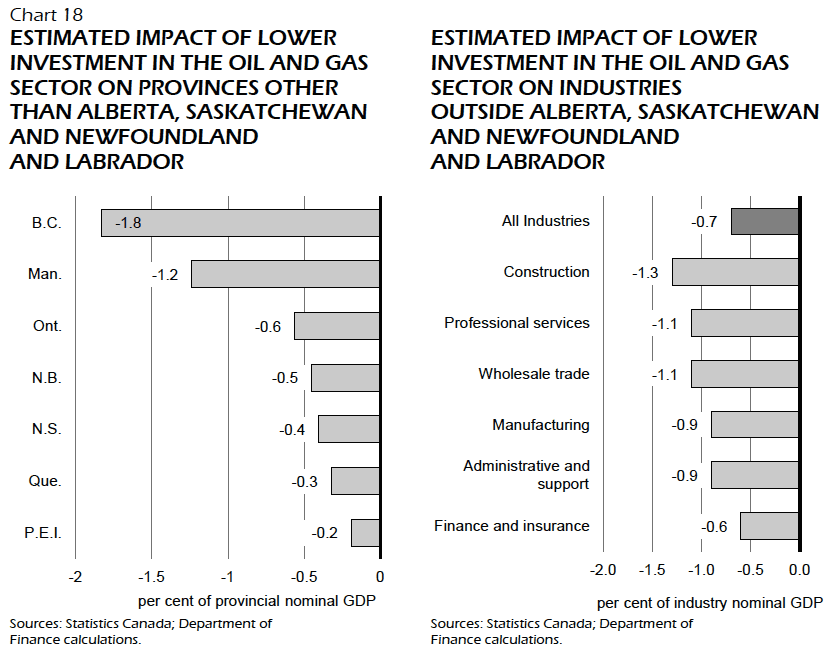 and provinces.
and provinces.
Economic growth has slowed. Wages haven’t grown significantly since the 1970s.
I want you to imagine an ordinary middle class Canadian family. Two parents with two kids in university.
The parents have been working for 25 years, the bills are growing, and it’s been hard to get ahead.
There’s nothing left at the end of the month. And they don’t know if they’ll ever be able to afford a decent retirement.
It’s no surprise that many Canadians feel they are worse off than their parents were at the same age—and that they feel the next generation will do worse than their own.
A fundamental change must happen: Canadians need to believe that hope and hard work will be rewarded again.
To make that change, we first have to see good reasons to be confident about the future.
The global economy is evolving rapidly. Digital technology has already transformed how we live and work. These changes will accelerate. For example, clean technologies are improving at an astonishing rate thanks to a torrent of investment and ideas. Markets in Asia present significant business opportunities.
Canada can be a leader in this new environment.
Our people are highly educated and skilled. The diversity of our population connects us globally and is a wellspring of innovation.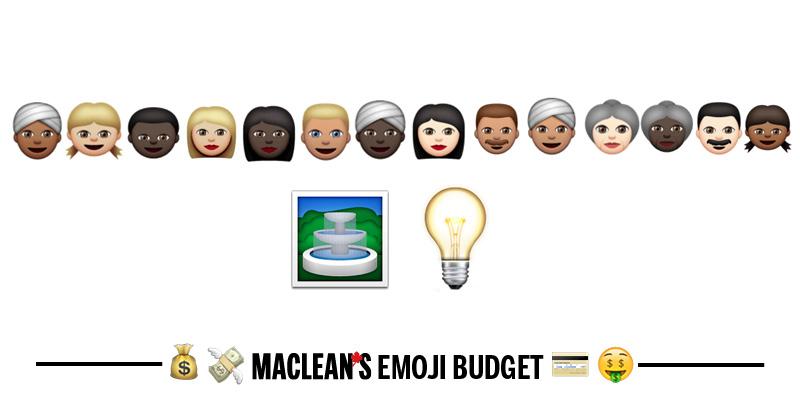
We are at the forefront of scientific research.
There will always be those who claim that we should fear change.
The reality is that we stand before a historic opportunity to shape and lead this change.
But to shape the future, we must invest in the future. We must do for our children and grandchildren what our parents and grandparents did for us.
Fortunately, circumstances for investment are ideal.
Wise management of the nation’s finances back in the 1990s restored Canada’s fiscal health, giving us a 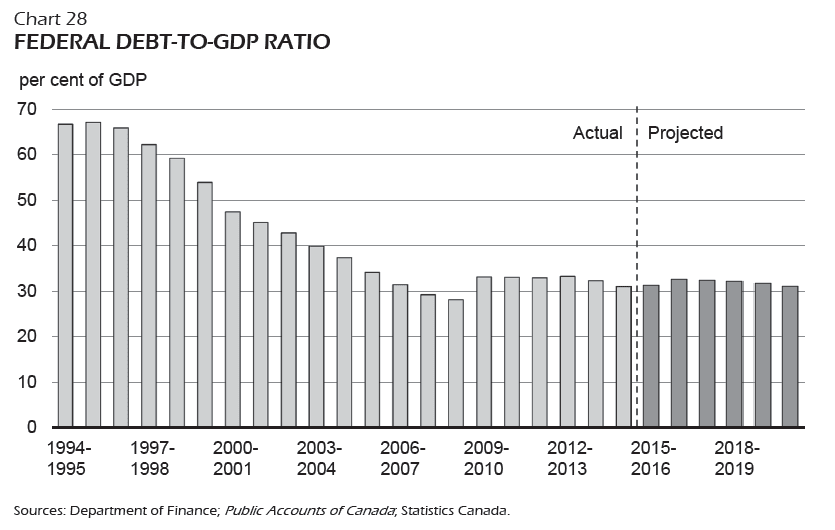 today that is by far the lowest of any G7 country.
today that is by far the lowest of any G7 country.
At the same time, our Interest rates weren’t always so low. When the Liberals fought massive budget deficits and staggering debt in the 1990s, their life was made miserable by high interest rates. Then-finance minister Paul Martin explained his government’s challenges were made worse by rates “much higher than anyone thought they would be, and because of the sheer size of our debt, those interest rate increases translate into billions of dollars of new charges for us.”, so we can borrow on excellent terms—as governments are being urged to do by everyone from the IMF to the OECD to the G20.
Our plan is reasonable and affordable. By the end of our first mandate, Canada’s debt-to-GDP ratio will be lower than it is today.
The Critics of big government might start a lament for a leaner public sector with this budget speech. Government appears 39 times in the 14-page speech. The same word appeared 19 times in the last Conservative budget. will make the investments needed to boost the economy over the long term.
Mr. Speaker, we know balancing kids, careers and personal goals is not easy. People work hard. They expect their government and their economy to work hard for them in return.
This budget puts people first and delivers the help Canadians need right now. But it’s about much more than this moment. It is an essential step in a sustained, strategic effort to restore That “sustained, strategic effort” means six years of deficits and no clear path to a balanced budget.
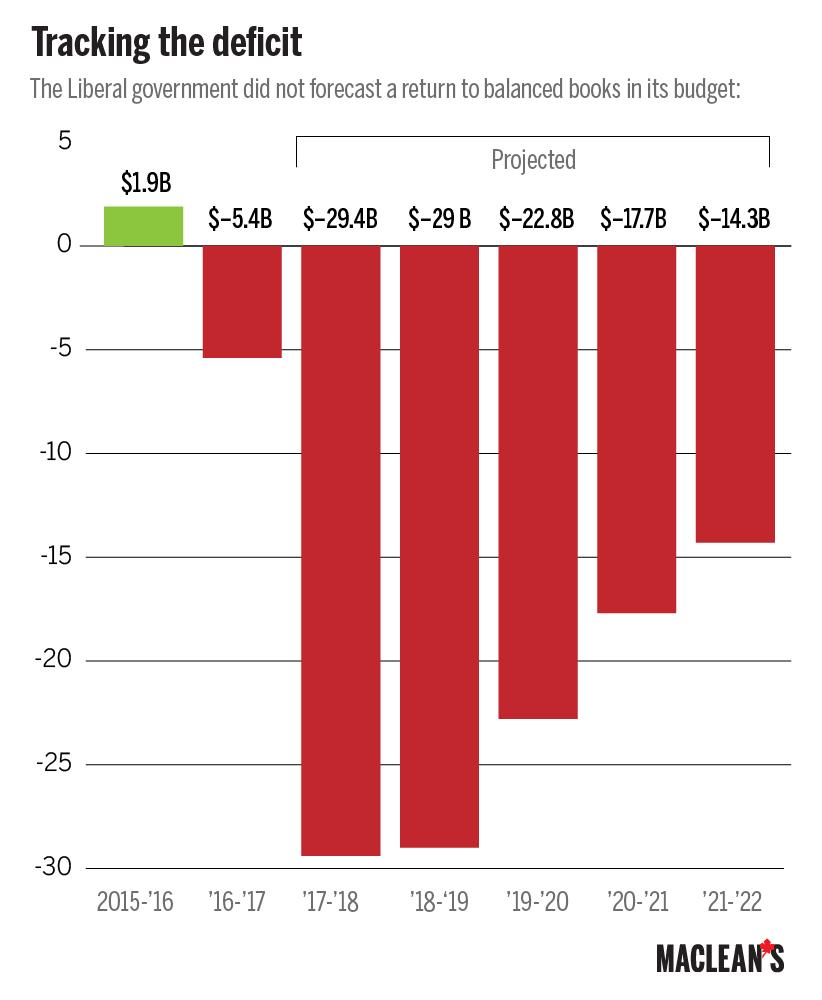 .
.
Help for the Middle Class
The fate of the middle class and the fate of the country as a whole are one. Canada will not prosper if the middle class doesn’t prosper.
In the short term, the collapse of the price of oil and other commodities has strained families and communities in many provinces. To ease the burden, the government is extending Employment Insurance benefits in affected regions, including parts of Alberta, Saskatchewan, Northern Ontario, Newfoundland and Labrador.
But the government must do more for families than merely help them through challenging times. That is why, earlier this year, the government cut taxes for middle class Canadians everywhere.
Since January 1st, roughly 9 million people see more money on every paycheque that they receive.
To help pay for this middle class tax cut, we raised taxes for the top 1 per cent.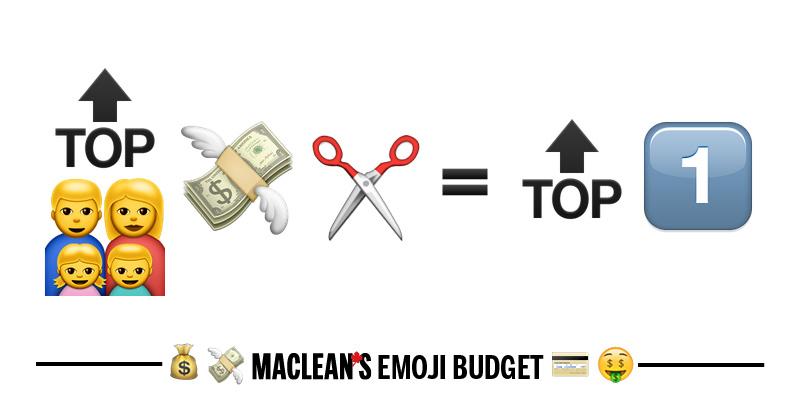 It’s only fair to ask those who can afford it to pay a little more so that we can help those who need it—and strengthen the economy for everyone.
It’s only fair to ask those who can afford it to pay a little more so that we can help those who need it—and strengthen the economy for everyone.
But more needs to be done. And with this budget, we will do more. Much more.
Mr. Speaker, I am proud to announce the introduction of the new Canada Child Benefit—a plan to help families more than any other social program since universal health care.
Families with children under 18 will receive the benefit starting in July. The size of each cheque will depend on your family, but 9 out of 10 families will get more help than they do under existing programs.
A single mom with one child under the age of 6 and earning $30,000 a year will receive an annual benefit of $6,400, tax-free.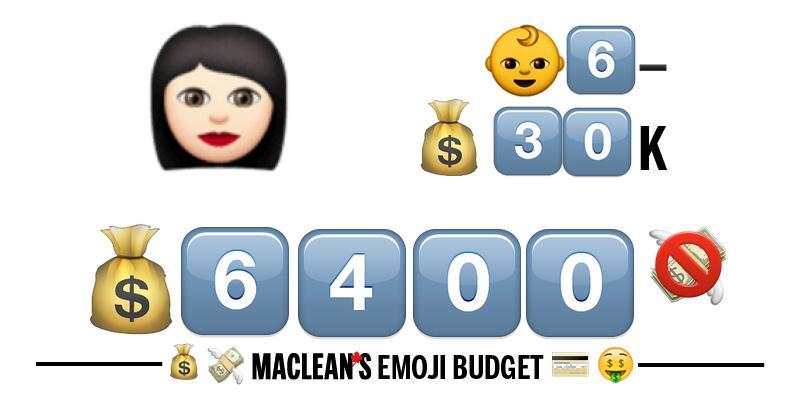
A family with two children earning $90,000 will receive $5,650—an increase of $2,500 from the current system.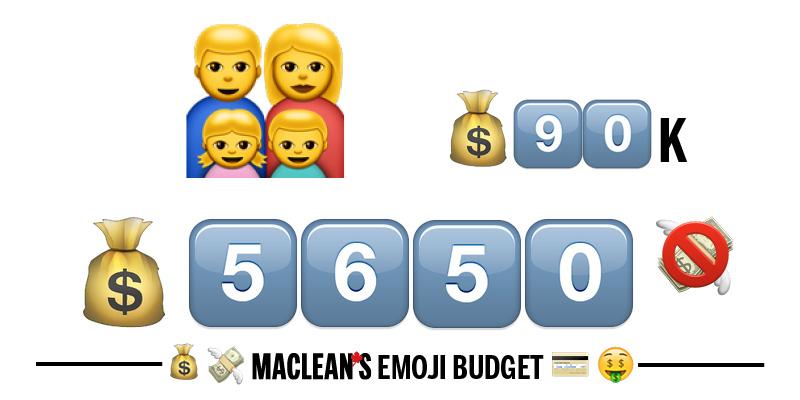
That is Governments love to wax eloquent about returning money to the Canadian people. In 2006, when a brand new Conservative government used part of a surplus to launch its signature child care benefit, then-finance minister Jim Flaherty positioned the program as giving back to over-taxed families. “This government could have chosen to spend all of the extra money collected from taxpayers. But that would not have been responsible. That money will be put to best use if we return it to the pockets of Canadians.”. Money that can go directly to eating healthier food, paying the rent and buying new clothes for back to school.
The Canada Child Benefit is the most significant social policy innovation in a generation. It will lift hundreds of thousands of kids up from poverty.
Mr. Speaker, our country has a long and proud history of big, bold, transformative public policies—programs like universal health care, Old Age Security and the Canada Pension Plan. Now we proudly add the Canada Child Benefit to that honourable list.
Long-Term Growth for the Middle Class
As important as government help is, what the Canadian middle class needs most is strong economic growth. That is why the government will
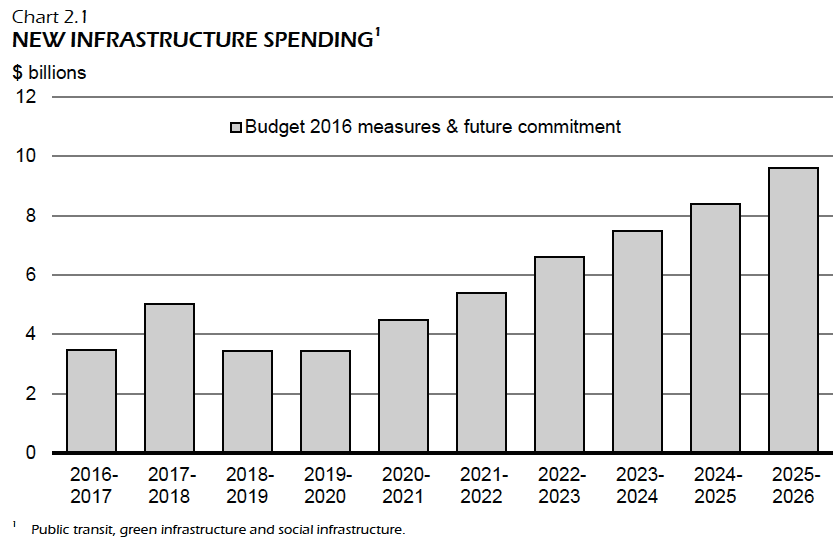
Here’s how those commitments compare to the Liberal campaign platform.
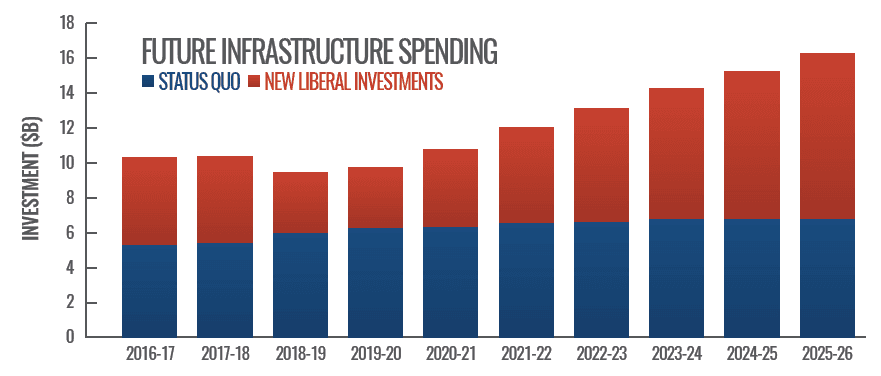 from coast to coast to coast.
from coast to coast to coast.
We all benefit when infrastructure is improved. New roads and bridges allow us to get around faster. Waste treatment plants, sewers and water mains keep water clean. Broadband connects us digitally. Social housing delivers affordable homes.
These benefits are obvious. But people don’t always realize that infrastructure is vital to strengthening the economy and growing the middle class.
Consider something as simple as traffic jams. Everyone knows they’re annoying. But they also slow the movement of people, goods and services—they actually hurt the economy.
That’s why an investment in  does much more than make life more pleasant. It boosts the economy. It helps the environment. Not just for today. But for years and decades into the future.
does much more than make life more pleasant. It boosts the economy. It helps the environment. Not just for today. But for years and decades into the future.
Studies consistently show that when there is slack in the economy and interest rates are low, for every dollar a government spends on infrastructure, substantially more than $1 of economic activity is generated.
These are good investments.
Some are urgently needed and require the government to act quickly. But in every case, investments will be made with a focus on long-term value—so that Canadians will reap the benefits far into the future.
To help families and communities struggling right now, the first phase of our infrastructure plan invests $11.9 billion over five years to modernize and rehabilitate public transit, water and wastewater systems, provide affordable housing, and to protect infrastructure systems from the effects of climate change.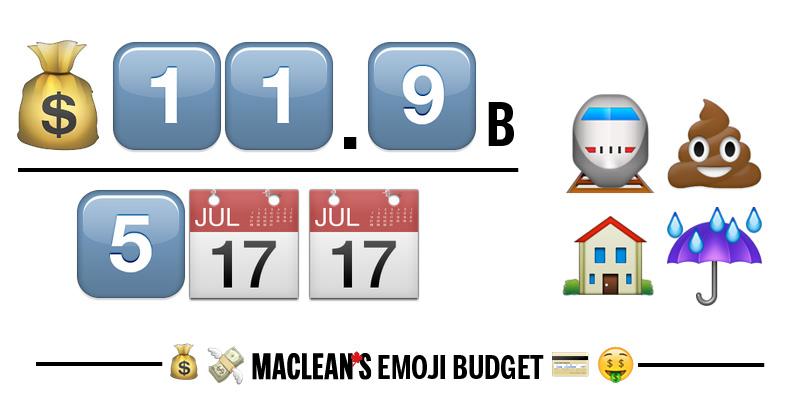
We are also investing $3.4 billion over five years to help maintain and upgrade national parks, harbours, federal airports, border infrastructure and support the clean-up of federal contaminated sites across the country. Over the course of the next decade, we will invest more than $120 billion in infrastructure.
These investments will accelerate our transition to a low-carbon, clean growth economy, make traffic flow more smoothly, bring high-speed Internet to more rural communities, and deliver so many other benefits for Canadians.
It means a Budget watchers will remember hypothetical characters created by Finance department bureaucrats. Last year, “Henry” and “Cathy,” the proud parents of “Grace” and “Elizabeth,” were the poster parents for a Conservative income-splitting scheme. These fictional families are meant to humanize otherwise dry budget documents, a small business owner in rural Manitoba will get her website up and going, and our communities will be better places to live. But most of all, they will deliver a long-term boost to the Canadian economy.
An Innovative and Clean Economy
The global economy is going through an extraordinary time of change. One thing, however, will never change. The people, companies and countries who create the next economy will prosper.
Canadians can be those people, create those companies and build that country. To get there, we need to invest in innovation.
Within the next year, the government will put forward a new Innovation Agenda which will outline a new vision for Canada’s economy as a centre of global innovation, renowned for its science, technology, resourceful citizens and globally competitive companies.
Underpinning the Innovation Agenda will be our plan for real change.
But we are not waiting to move ahead.
Today I am announcing several new, important measures that will boost our capacity to innovate and to grow our economy.
We start with post-secondary education.
Post-Secondary Education
Parents understand that their children’s future depends on the education and skills they get and that post-secondary education has become an important factor in our children’s future success. But every parent knows that post-secondary education is becoming increasingly expensive. The government must do its part to make post-secondary education more accessible.
We will increase  amounts by 50 per cent, from $2,000 to $3,000 per year for students from low-income families, and from $800 to $1,200 per year for students from middle-income families.
amounts by 50 per cent, from $2,000 to $3,000 per year for students from low-income families, and from $800 to $1,200 per year for students from middle-income families.
250,000 students across the country from low-income families, 100,000 students from middle-income families and 16,000 part-time students will get more help each year as a result of these measures.
That matters. It can be the difference between getting a degree and dropping out. And that can change a life.
To help these students gain experience, we will create up to 35,000 additional jobs for young Canadians in each of the next three years under the Canada Summer Jobs program.
And through the Youth Employment Strategy, we will make new investments to create clean jobs. We will also strengthen co-op and on-the-job learning opportunities that will help students land that all-important first job after graduation.
Investments in World-Class Institutions and Research
Canada’s universities, colleges and research institutions attract the best and brightest from around the world to create hubs of discovery and innovation. Hubs that help companies grow and compete in the new economy.
To support these centres of excellence, our government will provide the highest annual funding increase in over a decade for discovery research through Canada’s granting councils—an additional Stephen Harper’s Conservatives topped up funding for Canada’s research granting councils most years they held office. They also targeted that funding to specific ends. For instance, 2008’s budget committed $34 million a year to the Natural Sciences and Engineering Research Council “for collaborative research that directly contributes to the knowledge and innovation needs of Canada’s automotive, manufacturing, forestry and fishing industries.” Those earmarks disappeared in the Liberal budget..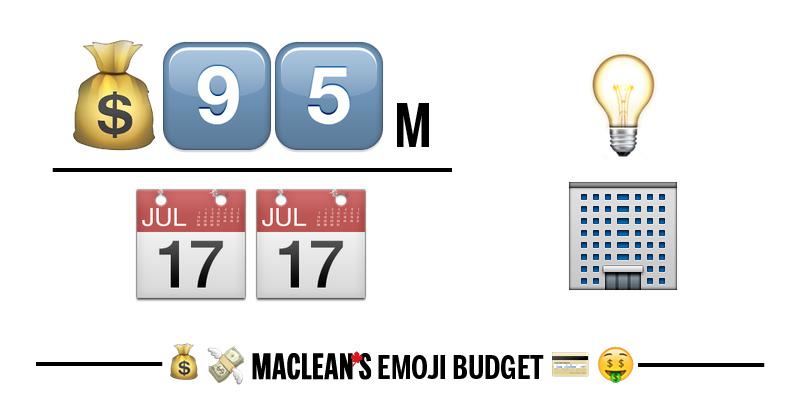
I am also announcing that we will invest $2 billion over three years for a new Post-Secondary Institutions Strategic Investment Fund to modernize on-campus research, commercialization and training facilities.
The fund is an example of an immediate investment that can make a real difference now, while preparing for future success. Colleges and universities will be able to modernize research labs, retrofit buildings used for advanced training, and expand on-campus incubators that support start-ups as they grow their businesses. It will create cleaner and more modern campuses today, and more economic opportunity tomorrow.
These investments all reflect our core belief that the advancement of basic science and the development of intellectual capacity is the foundation of innovation.
Science, insight and innovation tend to develop in clusters. The most famous of these clusters is Silicon Valley.
Everyone knows Silicon Valley is the world’s capital of digital technology. But, I’ll tell you, everyone in Silicon Valley knows that Canada’s own Waterloo region is home to some of the most brilliant, innovative minds and companies in the world.
This is a model that Canada can and must build on. We believe that businesses, post-secondary institutions, governments and other stakeholders can work together to accelerate economic growth. We will invest The word innovation appears 72 times in the 2016 budget plan. That compares with 174 instances in the final budget of the Tory years in 2015. to support innovation networks and clusters designed to increase collaboration and create value through innovation.
We need to connect people and their ideas. These clusters are where innovation will happen—innovation that will ensure Canada is at the forefront of technological advancement in the 21st century.
Clean Growth and a Low-Carbon Economy
Innovation and economic growth are not only good in themselves. They are essential in our struggle against global climate change.
Thanks to the leadership of the Prime Minister and the Minister of Environment and Climate Change, Canada is once again a champion of clean growth and a speedy transition to a low-carbon economy.
Our government is determined to work together with our provincial and territorial partners toward the new 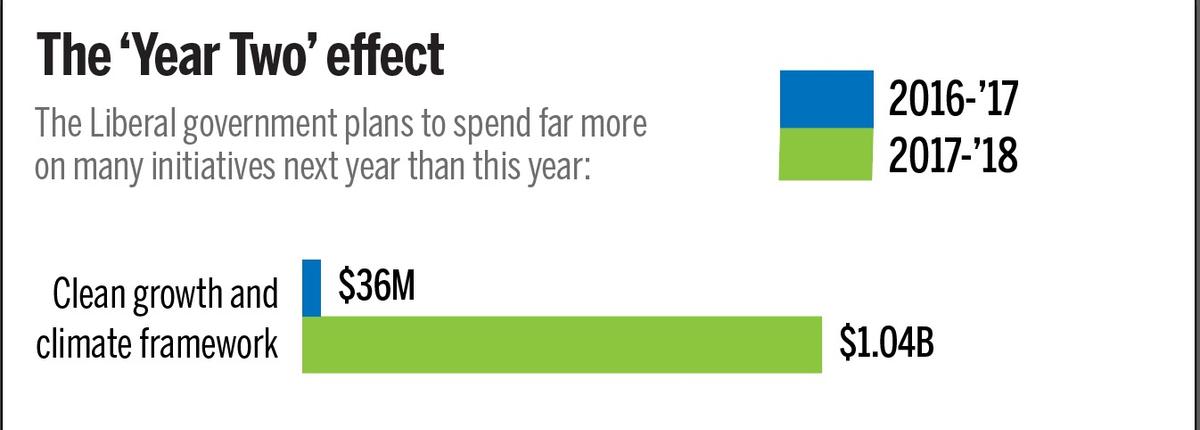 on Clean Growth and Climate Change.
on Clean Growth and Climate Change.
Some believe we must choose between a strong economy and a clean environment. They are simply wrong. We are at a turning point in world history, with the International Energy Agency reporting that the global economy has grown while global carbon emissions haven’t. The IEA credits the widespread adoption of clean energy. This is just a glimpse of the future—a future we want Canada to lead.
Think about what’s coming. Wherever the sun shines and the wind blows, farmers and landowners can become energy producers. Particularly for rural regions hurt by falling commodity prices, the opportunities for economic diversification are enormous.
Forestry and agri-food are good examples of sectors where the government can help to facilitate the shift toward a cleaner economy, and ensure good jobs in rural areas.
We will invest in new clean technology projects that address climate change, air quality, clean water and clean soil to support provincial and territorial actions that significantly reduce greenhouse gas emissions.
We are expanding eligibility for accelerated capital cost allowances in two important emerging areas: power for electric vehicles and electricity storage. We will also launch regional discussions to identify the most promising electricity infrastructure projects to reduce greenhouse gases.
As announced by the Prime Minister at the First Ministers Meeting in Vancouver, the government will create a new $2 billion Low Carbon Economy Fund.
Our concern for the environment isn’t limited to fighting climate change—our government is investing to expand protected areas, develop new national parks and fund ocean and freshwater science.
We are all blessed to live in a country of unique and spectacular natural beauty. The Jasper National Park will get $65.9 million to build a new hiking trail, the Want to get to those mountains? The feds are twinning the Trans-Canada Highway through Yoho National Park for a tidy sum of $85.9 million., the beaches we swim—and yes, as the Prime Minister knows, the rivers we paddle—give Canadians a special connection to the natural world. And a special responsibility to steward nature’s many gifts.
Mr. Speaker, our national parks are the most beautiful places on Earth. From Cape Breton to Gwaii Haanas, from Kluane to Point Pelee, we will invest in them as our gift to ourselves and the world on the occasion of Canada’s 150th anniversary in 2017.
Together we will share these national treasures with a whole new generation of children—and capture the spirit of the great Canadian road trip.
Believing in the Creativity of Canadians
Believing in innovation is also believing in the talent and in the creativity of Canadians. We must do more to support our artists and the cultural community in Quebec and across the country. Our cultural industries represent a key sector of our economy.
Culture is synonymous with creation. It also creates a collective wealth that goes beyond economic benefits and statistics.
CBC/Radio-Canada is a vital national institution that brings Canadians together and promotes our two official languages, while supporting creation and culture.
Today, I am announcing that our government will invest This spending commitment appears larger than the Liberal election platform, which committed to reversing budget cuts implemented by the former Conservative government. “We will protect the interests of our national broadcaster, in the interests of all Canadians,” the platform read. “We will reverse Stephen Harper’s cuts and invest $150 million in new annual funding for CBC/Radio-Canada, to be delivered in consultation with the broadcaster and the Canadian cultural community.” to modernize and revitalize CBC/Radio-Canada in the digital era.
I am also proud to announce that our government will invest a total of $1.9 billion over five years in the arts and culture sector.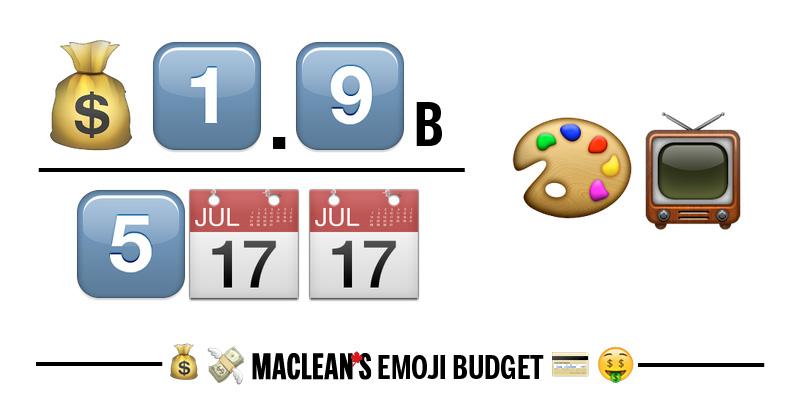
These targeted investments will be provided to, among others, the Canada Council for the Arts, Telefilm Canada, the National Film Board and unique programs that will allow our artists once again to shine on the international stage.
Evidence-Based Policies
Good policy is impossible without Innovation Minister Navdeep Bains is the government’s point-man on data. His mandate letter spelled out his main job on that file: “Improve the quality of publicly available data in Canada. This will require working with Statistics Canada, the President of the Treasury Board and other departments and agencies to develop an Open Data initiative that would consider big data and make more of the data paid for by Canadians available to the public.”. If we are to lift children out of poverty, we must first understand the cause. If we are to provide quality health care for seniors, we must know how many seniors there are and what services they need. If we want to protect minority languages, we need to know where they are spoken. Literally nothing that governments do can be done well without good data. That’s why, led by my colleague the Minister of Innovation, Science and Economic Development, our government wasted no time in bringing back the long-form census.
And we’re going to do more. Too often, when we ask for the evidence needed to make informed decisions, we find it just doesn’t exist. For example, we know that many Canadians, particularly British Columbians, are concerned about the effect of foreign ownership in the housing market. Unfortunately, the problem isn’t fully understood. More information is needed. To fill this data gap, and so many others like it, we will support Statistics Canada so that it can improve our understanding of important problems and help us all make better decisions.
An Inclusive and Fair Canada
Growing our economy is not enough if that growth isn’t shared by the middle class and those working hard to join it. The Liberal budget charts the relatively flat growth of family incomes since 1982—a visualization that makes clear that the strongest growth comes in higher-income households.
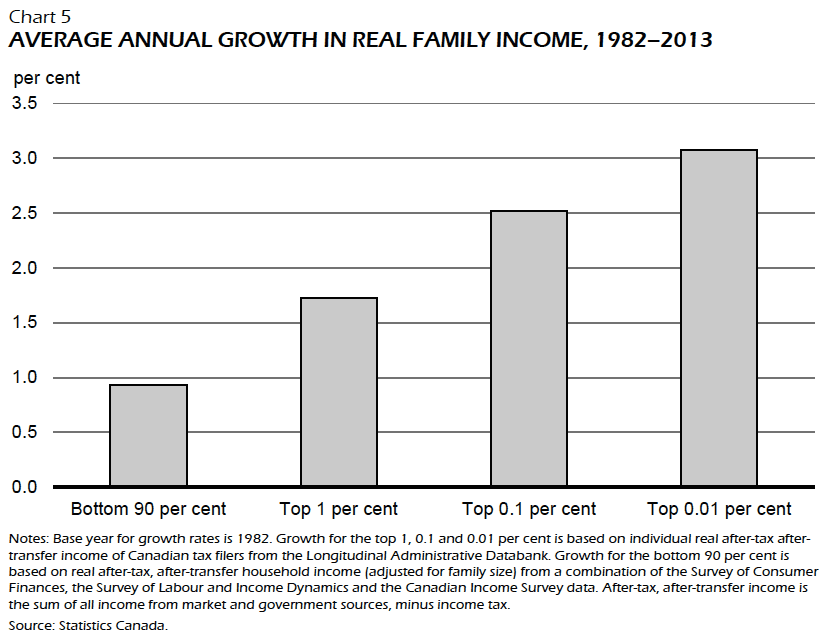 . To thrive, the middle class must be diverse. It has to represent us all—seniors, people living with disabilities, new Canadians, LGBTQ, rural Canadians, urban Canadians—all must benefit from the growth we create together.
. To thrive, the middle class must be diverse. It has to represent us all—seniors, people living with disabilities, new Canadians, LGBTQ, rural Canadians, urban Canadians—all must benefit from the growth we create together.
Health Care
Canadians overwhelmingly treasure Canada’s publicly funded, universal health care system. Parents don’t fear that treating a sick child will bankrupt them. Seniors know they won’t be turned away at the hospital. This is a source of national pride. It reflects our values, our generous nature and our commitment to helping each other in times of need. It also provides economic security and boosts productivity.
As an immediate step, the government will make new investments to support a healthier Canada, further supporting the work of Canada Health Infoway and the Canadian Foundation for Healthcare Improvement to identify and introduce innovations in the health care system.
As our population ages, more of us will depend on our health care system and on timely access to high-quality care, regardless of where we live, or our ability to pay. Protecting the integrity of our health care system is of utmost importance to our government. We know that innovation, collaboration and partnerships are a critical part of the solution.
As part of the boost in new annual funding for discovery research, we will provide an additional $30 million per year to the Canadian Institutes of Health Research.
The Minister of Health is actively engaged in discussions with territorial and provincial ministers of health, health sector stakeholders and Canadians on how best to invest in our system for long-term benefit. Home care and a patient-centred approach are part of these discussions, and our government is committed to providing the federal leadership needed in health care for the benefit of all Canadians.
Seniors
An integral part of the middle class dream is a secure and dignified retirement. For too many Canadians, it has become impossible to save enough before Canada’s population continues to age, part of a long-term demographic trend that continues to challenge policy-makers.
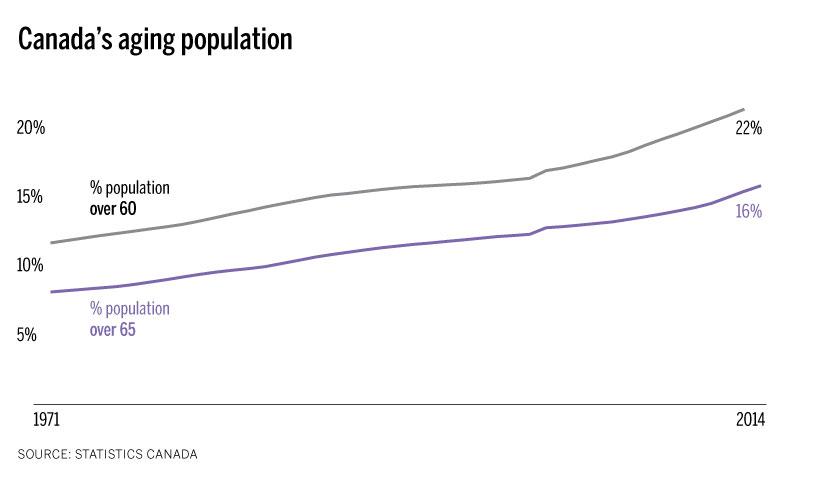 .
.
Too many seniors live in poverty—in particular single seniors.
We will help the most vulnerable seniors by increasing the Guaranteed Income Supplement for single seniors by up to $947 annually.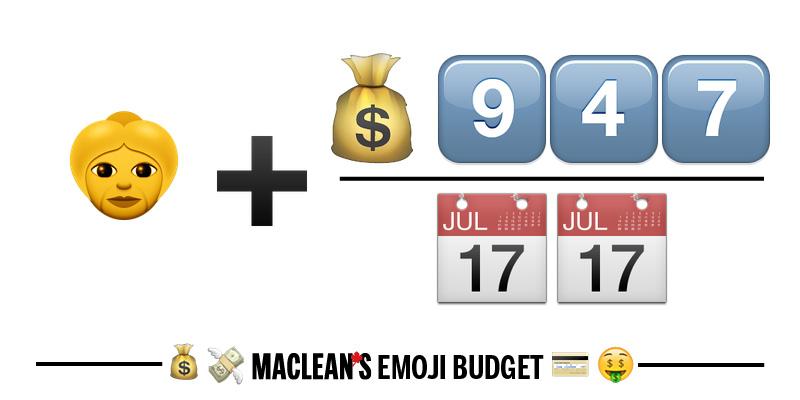 This enhancement more than doubles the current maximum top-up and represents a 10 per cent increase in maximum benefits that will improve the financial security of about 900,000 single seniors across Canada.
This enhancement more than doubles the current maximum top-up and represents a 10 per cent increase in maximum benefits that will improve the financial security of about 900,000 single seniors across Canada.
To help more Canadians achieve a secure retirement, I am personally committed to reaching an agreement with my provincial and territorial counterparts before the end of the year to enhance our Canada Pension Plan.
Veterans
Our veterans have dedicated their lives to the defence of their country. They deserve our gratitude, our respect and our support.
We made a solemn promise that they will have it. And we will keep that promise.
We will increase the Disability Award for injuries or illnesses resulting from military service, and align it with other New Veterans Charter benefits by indexing it to inflation.
We will expand access to higher grades of the Permanent Impairment Allowance to better support veterans who have had their career options limited by a service-related illness or injury.
We will increase the Earnings Loss Benefit to provide income replacement of 90 per cent of pre-release salary for injured veterans, and index this benefit so that it keeps pace with inflation.
Canada’s veterans have also earned access to more in-person government services right in their communities. With this budget, we are providing additional funding to Veterans Affairs Canada so that it can reopen service offices recently shuttered in Charlottetown, Sydney, Corner Brook, Windsor, Thunder Bay, Saskatoon, Brandon, Prince George and Kelowna. We’re also planning to open a new office in Surrey, B.C., and expand our outreach in northern Canada.
To help veterans in their rehabilitation process, we will enhance front-line services by hiring additional case managers to reduce the client-to-case manager ratio to no more than 25:1.
Status of Women
I am also proud to announce that we will increase the funding of Status of Women Canada to increase the Agency’s capacity to support gender-based analysis across the federal government and expand their regional presence to support local organizations working on women’s issues and gender equality.
I recently appointed the government’s Advisory Council on Economic Growth that will advise us as we build a longer-term growth strategy—and I am proud of the fact that the majority of the experienced business and economic leaders we’ve selected are women.
Helping the Less Fortunate
To meet the continuing and growing demand for affordable housing across the country, I am proud to announce that the government will double the amount that it provides to the Canada Mortgage and Housing Corporation’s Affordable Housing Initiative. Thousands of families will benefit from the measures contained in this budget to support affordable housing.
Our government will also invest an additional $112 million over the next two years in the Homelessness Strategy to help the various segments of the population that are directly affected.
Over the next two years, we will fund and support the construction or renovation of over 3,000 shelter spaces or transition homes for victims of violence. This is the largest single investment in support of victims of violence in our country’s history.
A New Relationship With Indigenous Peoples
We simply cannot claim to be successful as a country as long as Indigenous peoples aren’t given every chance to succeed.
In economic terms, the arguments are irrefutable. With an aging population, the Canadian economy needs more workers. The Indigenous population is young and growing. It could help. But that can’t happen until First Nations, Inuit and Métis peoples have a path to prosperity. And that means investments.
I have met with First Nations and Indigenous leaders and community members on several occasions, including during pre-budget consultations in Winnipeg. I commit to maintaining this relationship throughout my tenure as Finance Minister.
I am honoured to announce on behalf of the government historic investments of $8.4 billion over the next five years, to ensure Indigenous peoples share in Canada’s prosperity.
This is in keeping with the spirit of the Kelowna Accord, concluded in 2005 thanks to the inspired leadership of former Prime Minister Paul Martin.
Almost half that money will be 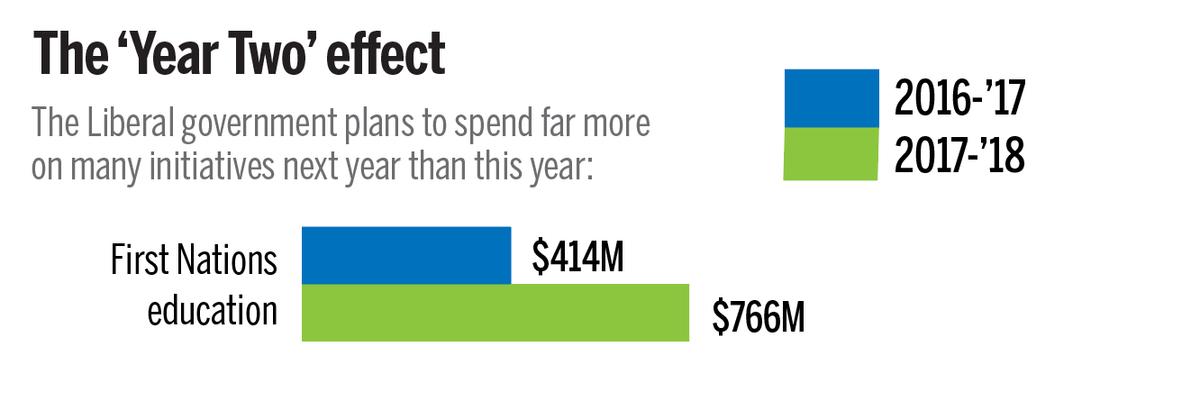 . We will build schools. We will hire teachers. We will ensure that Indigenous children get the education they need and deserve.
. We will build schools. We will hire teachers. We will ensure that Indigenous children get the education they need and deserve.
Housing is also an urgent need. The government will invest nearly $555 million over two years. So is health care. The government will invest to repair and build nursing stations and residences for health care workers in Indigenous communities.
Finally, we will put an end to the unconscionable crisis of boil-water advisories on reserves. Our government will invest nearly $2 billion in water and wastewater infrastructure and drinking water monitoring over five years so that every Canadian child has access to clean drinking water, no matter where they live.
Our Commitment to the World
Last November, the government committed $678 million over six years, starting in 2015–16, to resettle 25,000 Syrian refugees by February 29, 2016,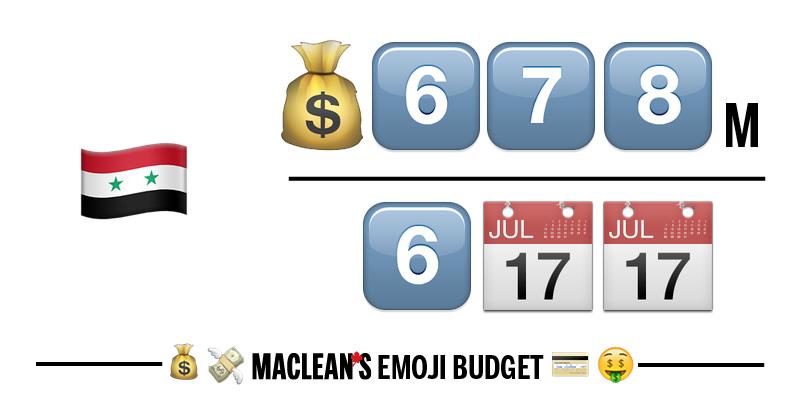 and today we are committing new funding to resettle an additional 10,000 government-assisted Syrian refugees over the course of 2016.
and today we are committing new funding to resettle an additional 10,000 government-assisted Syrian refugees over the course of 2016.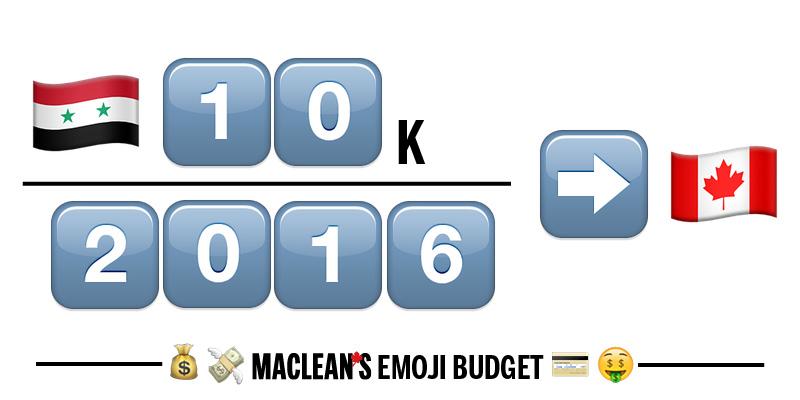
This is an issue that is very close to me personally, having been involved in efforts to provide education and opportunity to Somali and South Sudanese girls in the Kakuma Refugee Camp over the past decade. I’ve been moved by the warmth, caring and resilience of people who have given up so much to flee conflict in search of a better life for themselves and their families.
This fall, I was doubly moved by the outpouring of support and the welcome Canada reserved for Syrian refugees. I believe the world saw the best of Canada in our response to this crisis, and I thank the Minister of Immigration, Refugees and Citizenship for his leadership.
We know that newcomers are vital to the Canadian economy, and so our government will welcome How much will a boost in immigration levels make to the Canadian workforce? Maclean’s business editor Jason Kirby charted the impact of newcomers, grafted onto Canada’s population pyramid.
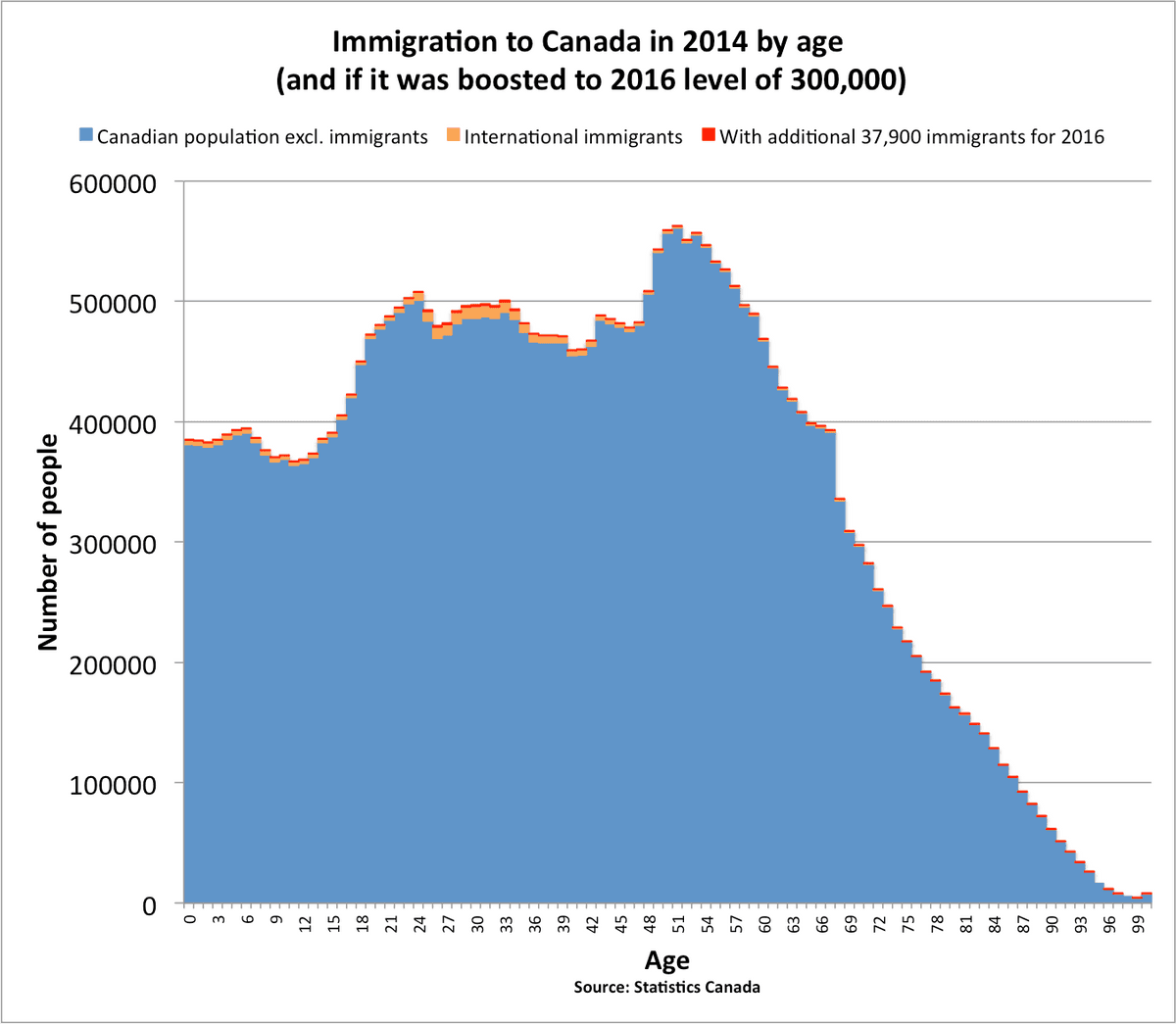 in 2016.
in 2016.
We believe families belong together. Family reunification contributes to the well-being of all Canadians by contributing to our collective wealth, in both sociocultural and economic terms.
By stepping up our efforts in this area, we anticipate 20,000 admissions under the Parent and Grandparent Program, bringing celebration and hope for thousands of Canadians who for too long have been living a world away from loved ones.
Defence
The government is steadfast in its commitment to providing greater security for Canadians. Led by the Minister of National Defence, we will conduct an open and transparent process to create a new defence strategy that will deliver a modern, more agile and better-equipped military.
Over the course of 2016, we will seek the input of Canadians, experts, allies and partners, as well as Parliament, on a new defence strategy.
The government is committed to renewing the major equipment of the Canadian Armed Forces, including Canada’s Just how old are these jets? They first entered service in the Canadian Air Force in 1983. The 1980 budget was the first to make reference to “spending on the New Fighter Aircraft Program” that, the same year, selected the CF-18. and maritime warships.
To ensure that funding is available when key capital acquisitions will be made, we will reallocate funding for large-scale capital projects from the 2015–16 to 2020–21 period to future years. This funding is being shifted into future years to align with the timing of major equipment acquisitions.
A Strong Voice
Our voice is now heard loud and clear on the international stage. Since November, we have signed an historic greenhouse gas emission reduction agreement in Paris.
We have renewed and revitalized our relationship with our most important partner, the United States, and signed a new continental energy and environmental agreement that includes Mexico.
We have significantly increased our contribution to the multinational coalition against the Islamic State of Iraq and Syria.
And we have led the charge on the need to invest in order to boost economic growth at international economic forums such as Davos and the G20.
Conclusion
Mr. Speaker,
We believe the time has come to invest to build a strong and prosperous country.
Today, we are seizing the opportunity to invest in people and the economy, and to prepare Canada for a brighter future.
Of course, this is only the beginning. Today we have taken some big steps in a long journey. We have much work ahead of us.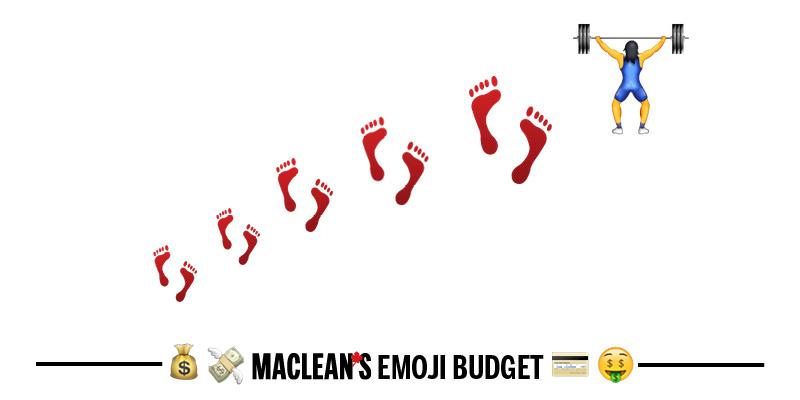
As we do that work, we remember that while we may act in the present we do not act for the present.
We act for the years and decades to come.
We act for our children and our children’s children.
We act so that they may inherit a more prosperous and more hopeful Canada.
Thank you, Mr. Speaker.
Published March 22, 2016